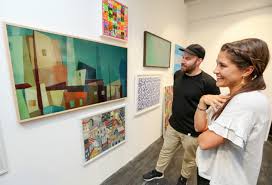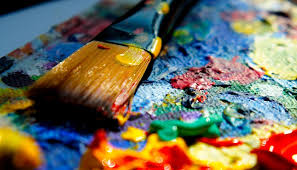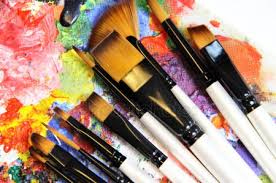different methods
HISTORY OF THE DEVELOPMENT OF THE DUTCH AND FLEMAND STILL LIFE (part 1)
 In the 50s and 60s of the 16th century, the situation in the Netherlands became extremely tense. If in the first half of the century the burden of economic exploitation by Spain was balanced to a certain extent for the bourgeoisie with the benefits derived from the inclusion of the Netherlands in the world empire of the Habsburgs, which guaranteed the security of trade, in the second half of the 16th century the situation radically changed. The dependence of the Netherlands on feudal Catholic Spain became a brake on the further development of the country.
In the 50s and 60s of the 16th century, the situation in the Netherlands became extremely tense. If in the first half of the century the burden of economic exploitation by Spain was balanced to a certain extent for the bourgeoisie with the benefits derived from the inclusion of the Netherlands in the world empire of the Habsburgs, which guaranteed the security of trade, in the second half of the 16th century the situation radically changed. The dependence of the Netherlands on feudal Catholic Spain became a brake on the further development of the country.
Increased pressure on the Dutch provinces, the tax system, which undermines the foundations of trade – all this delayed the development of productive forces. The free development of the bourgeoisie has already become incompatible with the feudal system. Continue reading
HISTORY OF LANDSCAPE GENRE DEVELOPMENT (part 2)
 Landscape motifs began to play a more important role during the High Renaissance. Many artists began to carefully study nature. Having abandoned the usual construction of spatial plans in the form of wings, piling up parts that are inconsistent in scale, they turned to scientific developments in the field of linear perspective. Now the landscape, presented as a whole picture, is becoming an essential element of artistic plots. So, in the altar compositions, which the painters most often referred to, the landscape looks like a scene with human figures in the foreground. Continue reading
Landscape motifs began to play a more important role during the High Renaissance. Many artists began to carefully study nature. Having abandoned the usual construction of spatial plans in the form of wings, piling up parts that are inconsistent in scale, they turned to scientific developments in the field of linear perspective. Now the landscape, presented as a whole picture, is becoming an essential element of artistic plots. So, in the altar compositions, which the painters most often referred to, the landscape looks like a scene with human figures in the foreground. Continue reading
ABOUT AQUARIAN PAINTING TECHNIQUE (part 2)
 Incidentally, the generally accepted term “watercolor” was first used by Chennino Chennini in his Treatise on Painting (1437), the main point in the described process was the dissolution of paint in water containing vegetable gum – gummi.
Incidentally, the generally accepted term “watercolor” was first used by Chennino Chennini in his Treatise on Painting (1437), the main point in the described process was the dissolution of paint in water containing vegetable gum – gummi.
So, from the history of technology it is clear that the first method of watercolor writing was painting on dry soil, another way of working, on the wet surface of the paper, was supposedly applied not earlier than the beginning of the 19th century. A more capricious and whimsical way of writing wet was born in England, probably because in a country located on an island surrounded by water in this “foggy Albion”, the increased humidity of the air itself dictated the painting’s character light and soft. Continue reading




